18 Wild Animals in Morocco [Wildlife in Morocco]
Want to know more about the wildlife in Morocco?
Discover 18 wild animals in Morocco in this post, as well as interesting facts about them. 🇲🇦
Learn All About Moroccan Animals
Ready to learn all about Moroccan animals?
I’ve always been fascinated by animals, and by how they can be so different from one country to another. In this guide, we’ll focus on the many animals Morocco has on the land, in the sky, and underwater.
I’ve split the guide into 6 categories:
- Native animals from Morocco
- Endangered animals of Morocco
- What is the Morocco national animal?
- How many animals native to Morocco?
- What animal is Morocco known for?
- Does Morocco have wildlife?
Let’s dive in right away with our first category!
Native Animals from Morocco
Morocco is an African country located in the northwestern part of the continent, right next to Spain. It has access to both the Mediterranean Sea and the Atlantic Ocean, has 2 official languages (Arabic and Berber), and, because of its strategic location, it used to be a French colony. It is bordered by Algeria and the disputed territory of Western Sahara, and although its largest city is Casablanca, its capital city is Rabat, which counts more than 580,000 inhabitants (but more than 1,200,000 if you include the metropolitan area), and which is only the country’s seventh largest city!
An interesting part of the country that I wanted to tackle is its wildlife. In light of that, I have listed the best of it, and I hope you will love learning what animals live in Morocco.
Here’s the Morocco animals list.
1. Cuvier’s gazelle
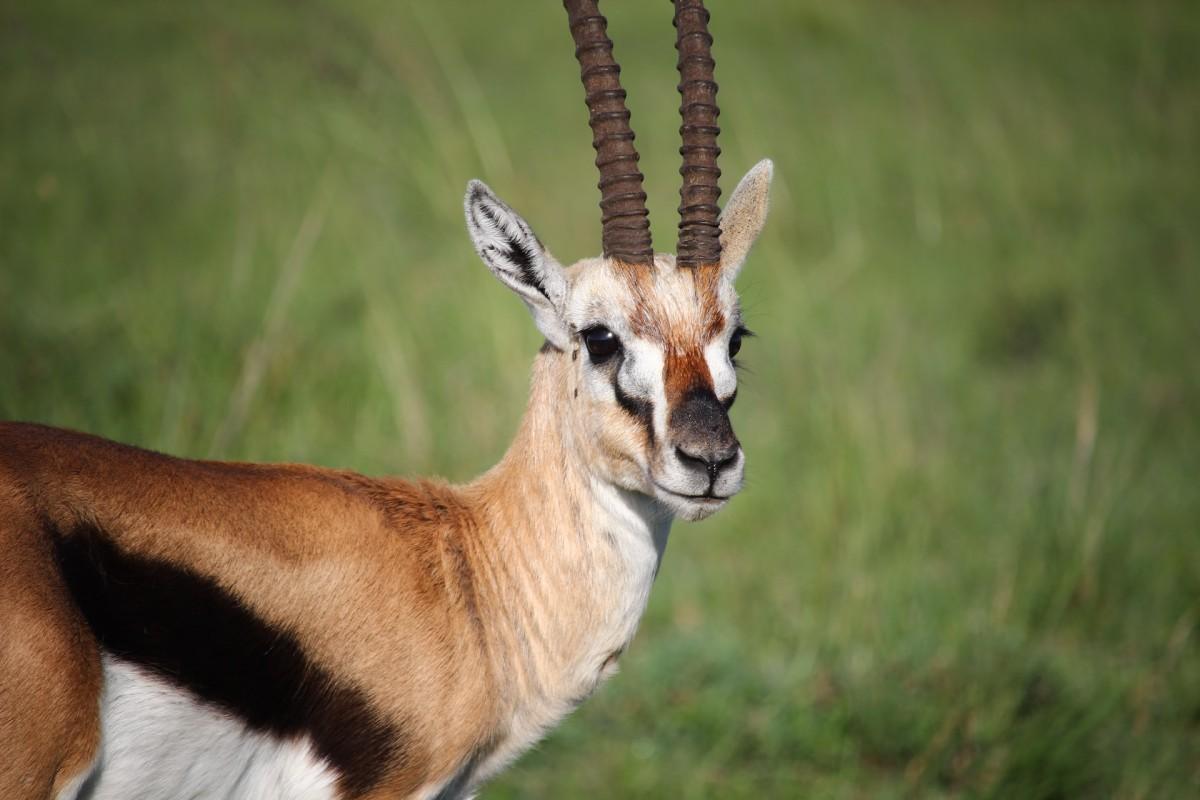
- Name: Cuvier’s gazelle
- Scientific name: Gazella cuvieri
- Conservation status:
Cuvier’s gazelle, also known as the edmi, is a species of gazelle native to North Africa, namely Morocco, Algeria, Western Sahara, and Tunisia. Most likely due to its adaptation to its main habitat, woodlands, this gazelle is one of the darkest.
This mammal is not protected in Morocco and Algeria, opposite to Tunisia, and it suffers from competition for food with domestic livestock. Because of this and habitat loss, it is considered vulnerable to extinction.
2. Barbary macaque
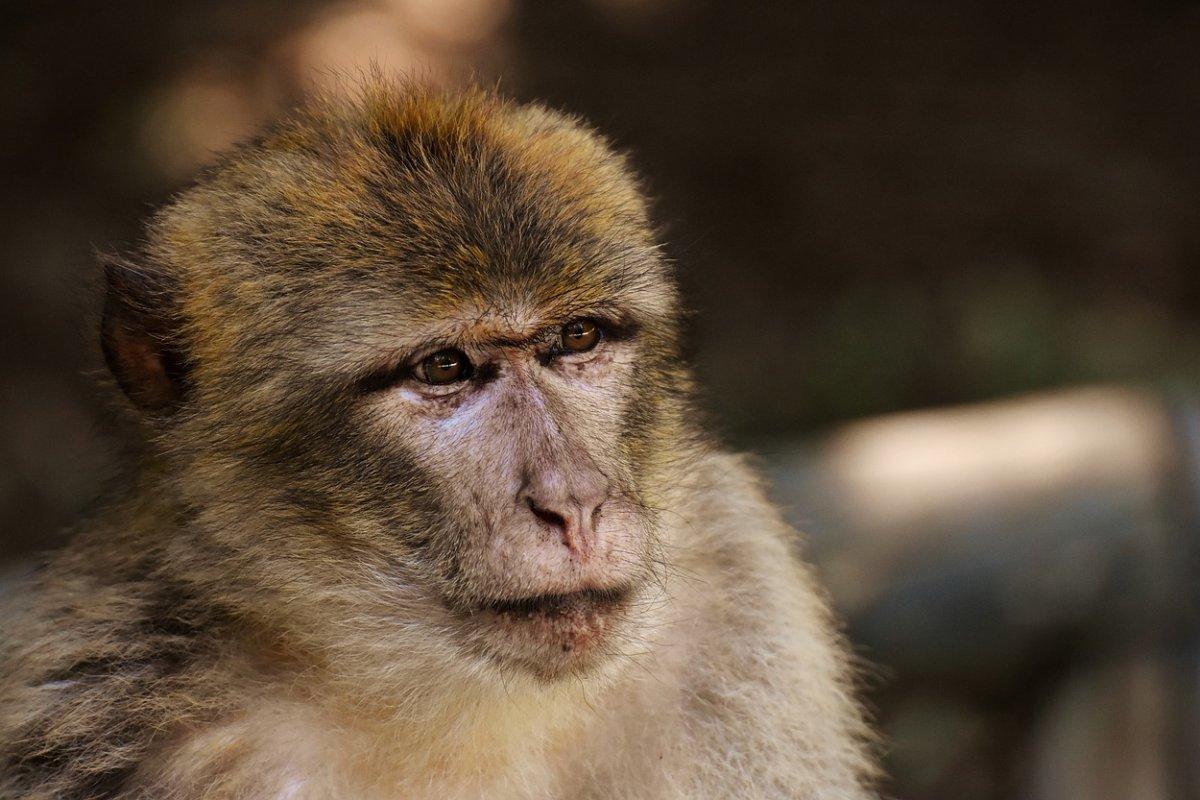
- Name: Barbary macaque
- Scientific name: Macaca sylvanus
- Conservation status:
The Barbary macaque, also known as the Barbary ape or the magot, is surely the most iconic and well-known animal from Morocco. One of its populations is located in Gibraltar, on the European side of the Europe-Africa border, and these are the only wild monkeys on the continent.
This macaque is native to the Rif Mountains and the Atlas Mountains of Morocco and is seriously threatened by deforestation and hunting.
3. Northern bald ibis
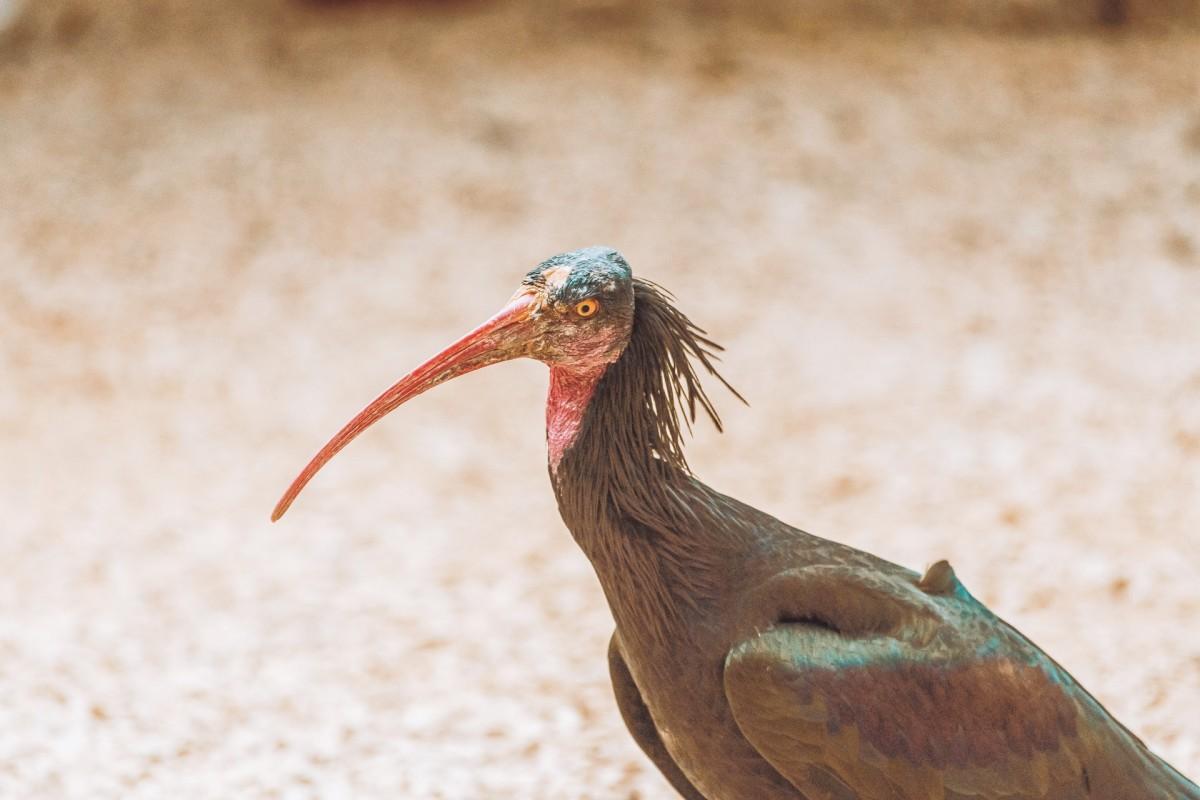
- Name: Northern bald ibis
- Scientific name: Geronticus eremita
- Conservation status:
The northern bald ibis, also known as the waldrapp or the hermit ibis, is the only species of bird endemic to Morocco. It can be found in a very small area, south of Agadir, in the southern half of the country, and inhabits semi-desert, barren and rocky habitats, usually next to running water.
This ibis used to be widespread across many regions such as North Africa, Central, and South Europe, and the Middle East, but it disappeared from almost its entire range; to combat this phenomenon, reintroduction programs are underway.
4. Egyptian vulture
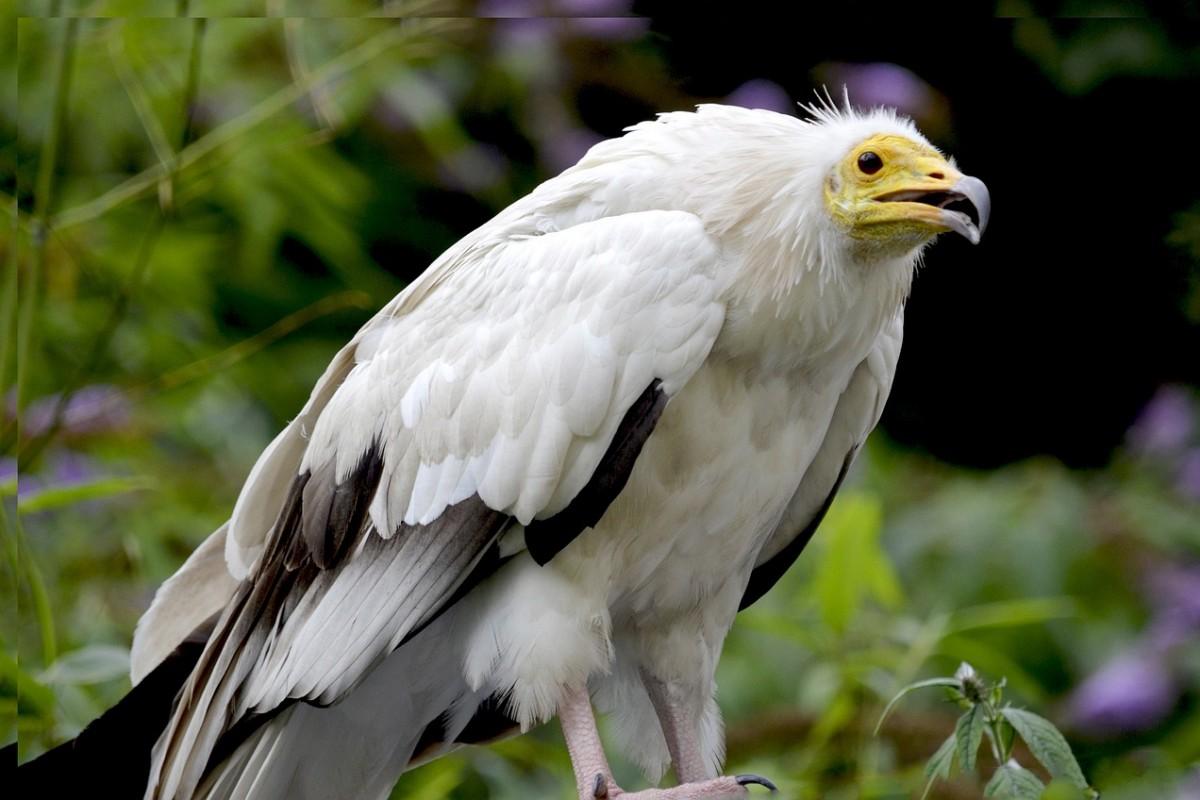
- Name: Egyptian vulture
- Scientific name: Neophron percnopterus
- Conservation status:
The Egyptian vulture, also known as the white scavenger vulture or the pharaoh’s chicken, is a small species of Old World vulture native to northwestern Africa, southwestern Europe, sub-Saharan Africa, the Indian subcontinent, the Middle East, and the Arabian Peninsula.
In Morocco, its colonies are mostly made of immature individuals, and they can often be found on large, dead pines. As its name suggests, the Egyptian vulture was of particular importance in Ancient Egypt and had its own hieroglyph.
5. Berber toad
- Name: Berber toad
- Scientific name: Sclerophrys mauritanica
- Conservation status:
The Berber toad, also known as the Moorish toad, the Mauritanian toad, the Moroccan toad, or the pantherine toad, is a species of toad endemic to northwestern Africa (Morocco, Algeria, and Tunisia) and southern Spain, where it was introduced.
This toad inhabits subtropical and tropical dry cork oak forests, as well as freshwater marshes, rivers, arable land, plantations, and even urban areas, at elevations up to 2,650 m / 8,694 ft above sea level.
6. Crested porcupine
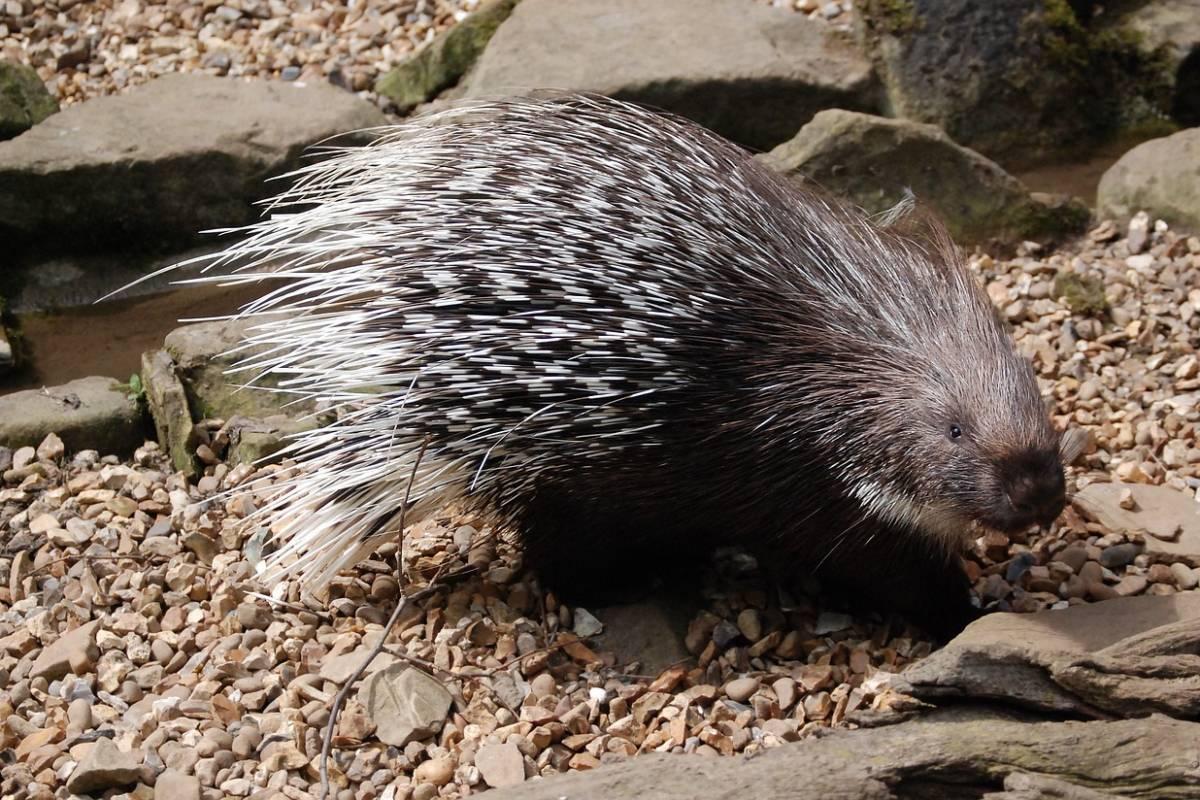
- Name: Crested porcupine
- Scientific name: Hystrix cristata
- Conservation status:
The crested porcupine, also known as the African crested porcupine, is a species of rodent native to sub-Saharan Africa, North Africa, and Italy. The Moroccan population is one of the few Mediterranean ones, alongside Algeria, Sicily, and Tunisia.
This porcupine can be found at altitudes of up to 2,550 m / 8,370 ft above sea level, in the Moroccan Anti-Atlas, another mountain range of the country.
7. Saharan striped polecat
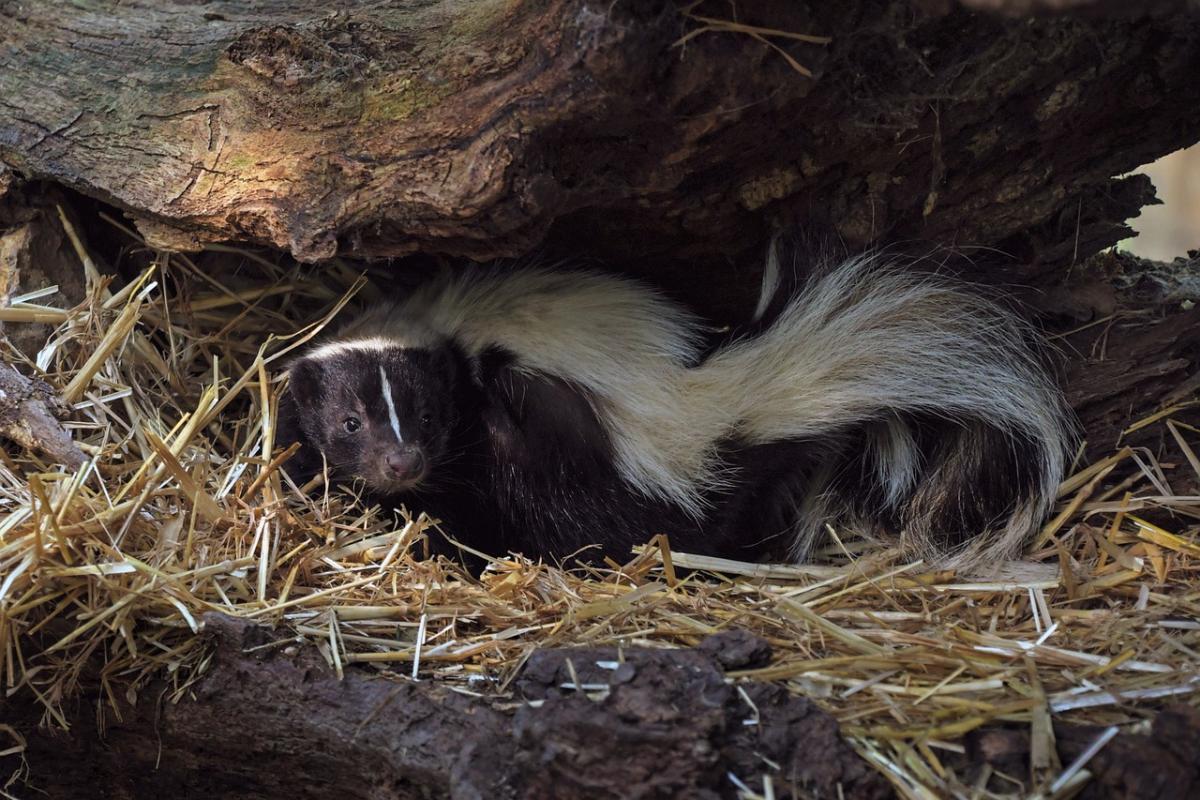
- Name: Saharan striped polecat
- Scientific name: Ictonyx libycus
- Conservation status:
The Saharan striped polecat, also known as the Saharan striped weasel, is a species of mustelid native to the surrounding areas of the Sahara, despite its name. It can thus be found from Morocco, Mauritania, and Egypt to Sudan and Djibouti.
This mammal mainly feeds on small birds, lizards, and their eggs, as well as small mammals. It tracks its prey by scent and digs it out of its burrow.
8. Striped hyena
- Name: Striped hyena
- Scientific name: Hyaena hyaena
- Conservation status:
The striped hyena is the lesser-known species of hyena in Africa, alongside its relative, the spotted hyena, widely known as the laughing hyena. This smaller species is threatened by persecution, depletion of prey, and habitat loss, and fewer than 10,000 mature individuals are left in the wild; because of this, it is considered near threatened.
This hyena is known to attack domestic livestock in Morocco, particularly poultry, sheep, goats, and dogs.
9. Common wall gecko
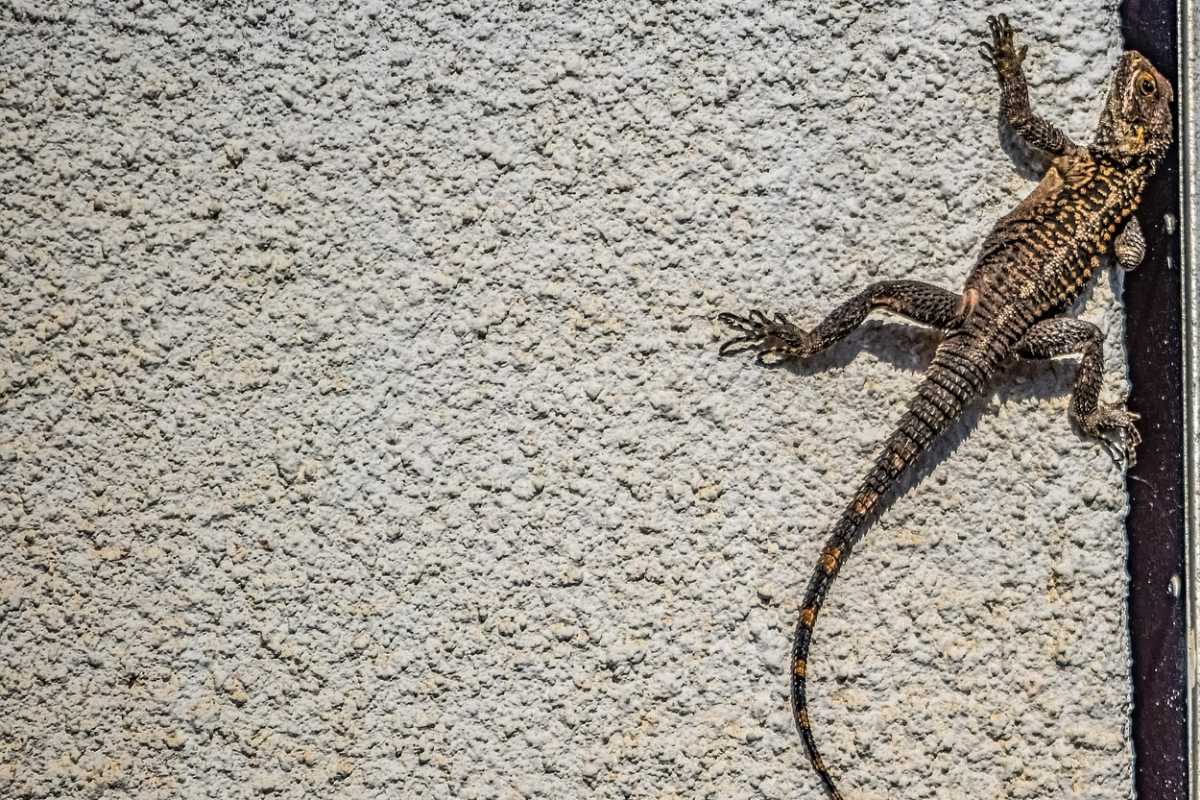
- Name: Common wall gecko
- Scientific name: Tarentola mauritanica
- Conservation status:
The common wall gecko, also known as the Moorish gecko, the European common gecko, or the crocodile gecko, is a species of gecko native to the western parts of the Mediterranean Sea and has been introduced to the Balearic Islands and Madeira, as well as to the Americas.
This gecko can be found throughout most of Morocco, and hides in a refuge during the day, before emerging at dusk or at night and hunting for insects. In Morocco, it can easily be seen around light sources such as street lamps.
10. Fennec fox
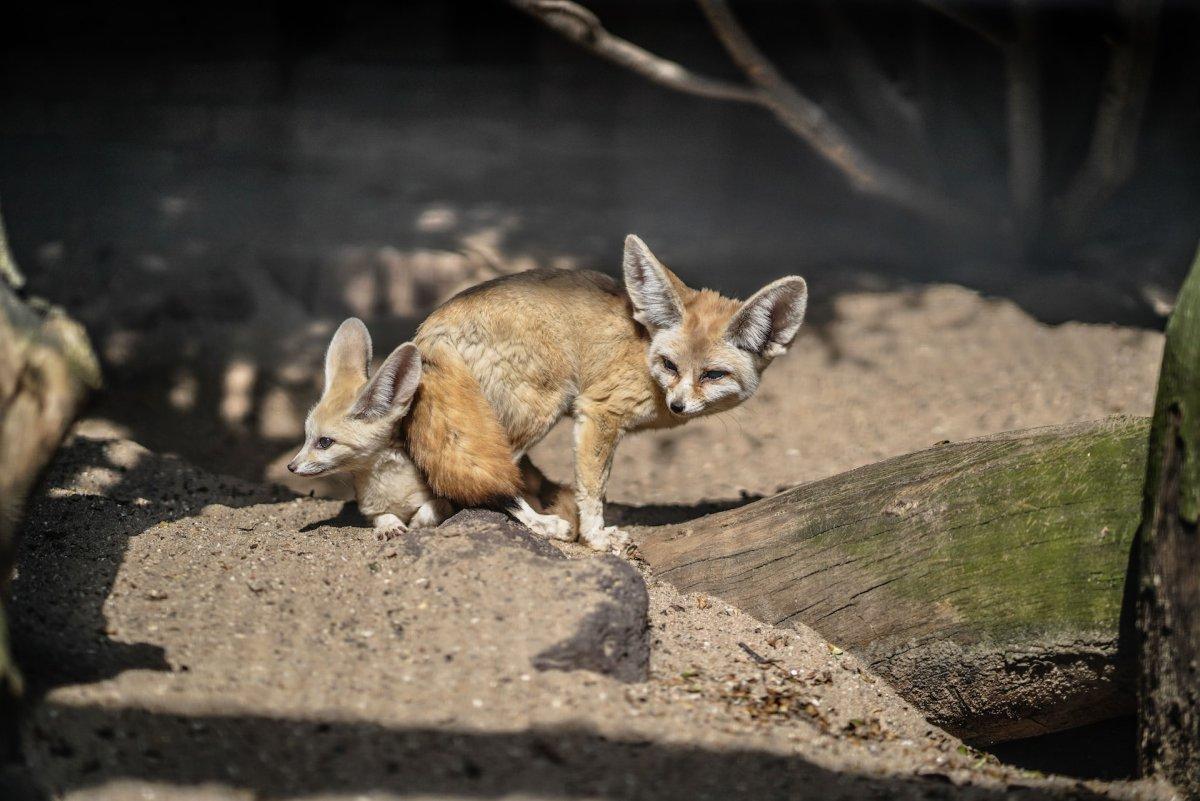
- Name: Fennec fox
- Scientific name: Vulpes zerda
- Conservation status:
The fennec fox is the smallest species of canid in the world. It is native to the deserts of North Africa, from Western Sahara to the Sinai Peninsula, and is characterized by its extremely large ears, which are ideal to dissipate heat.
This fox indeed lives in the desert and digs out burrows to hide in during the day. Its range is slowly decreasing in Morocco, and it is limited to marginal areas, mainly due to the expansion of human settlements.
11. Sand cat
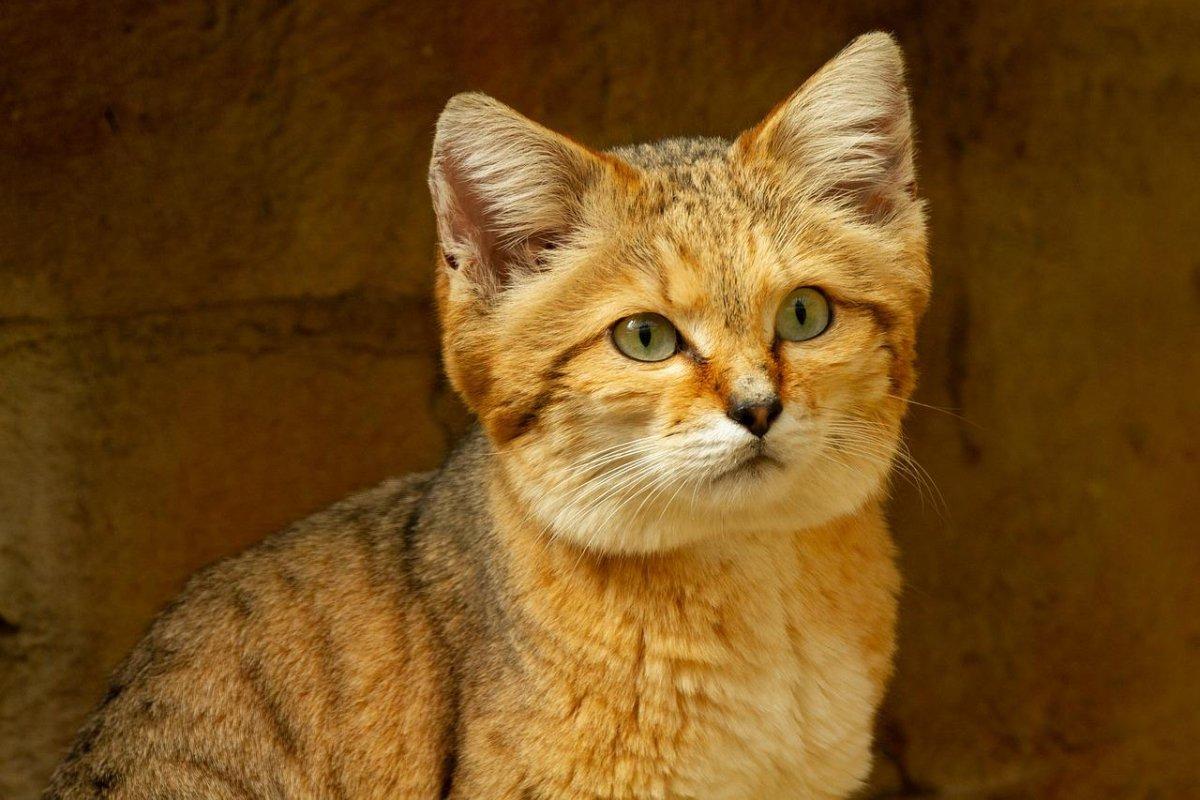
- Name: Sand cat
- Scientific name: Felis margarita
- Conservation status:
After the small canid comes the small felid! The sand cat, also known as the sand dune cat, is a small species of wild cat native to several isolated areas, from Morocco and the rest of northwestern Africa to western Asia and the Arabian Peninsula.
This cat spends the day resting in underground dens and emerges at night, hunting for rodents and small birds. It is known for traveling long distances, and moves in fact 5.4 km / 3.4 mi on average per night!
12. Mediterranean monk seal
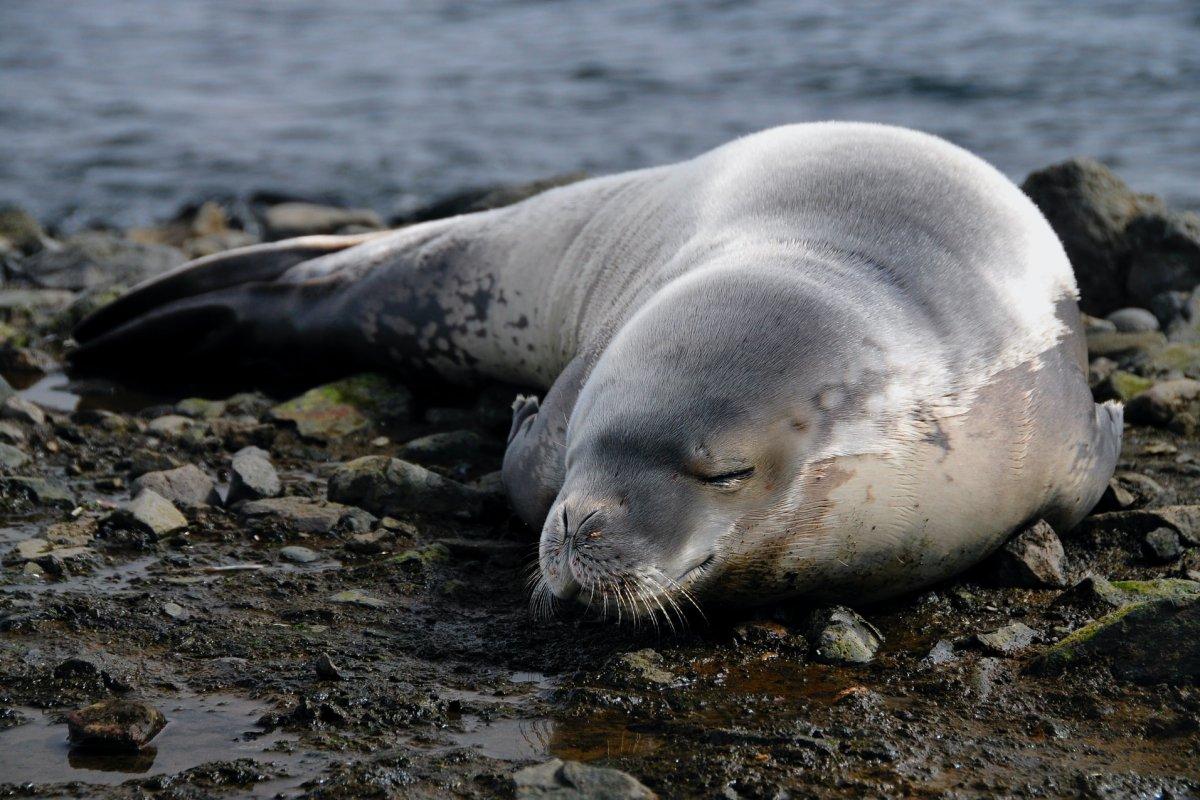
- Name: Mediterranean monk seal
- Scientific name: Monachus monachus
- Conservation status:
We haven’t talked about it yet, but not only is Morocco’s coastline absolutely stunning, but it also provides incredible and unique marine wildlife such as the Mediterranean monk seal.
The Mediterranean monk seal is the world’s rarest pinniped species: fewer than 700 individuals remain in the wild, scattered in 3 to 4 populations across the Mediterranean Basin and the eastern Atlantic Ocean. Morocco is one of the four countries (alongside Spain, Portugal, and Mauritania) to have signed an agreement to implement a conservation plan for this endangered seal species.
13. Egyptian mongoose
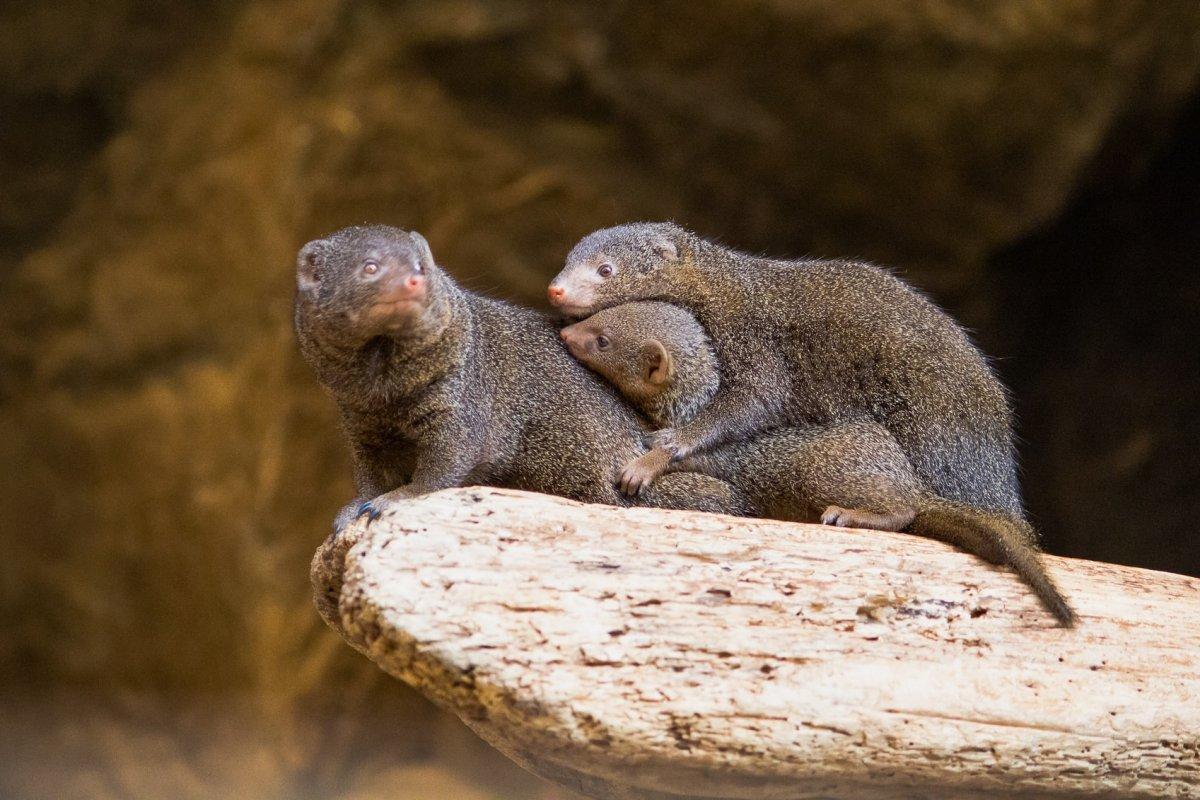
- Name: Egyptian mongoose
- Scientific name: Herpestes ichneumon
- Conservation status:
Despite its name, the Egyptian mongoose is absolutely not endemic to Egypt, as it can be found throughout much of sub-Saharan Africa, and was either introduced or is native to the Iberian Peninsula and northwestern Africa.
Although considered of least concern with its very wide range, the Egyptian mongoose is heavily hunted for use in rituals, and trapped around agricultural areas. In countries such as Israel, it is protected by law and can only be hunted with a permit.
14. Dwarf sperm whale
- Name: Dwarf sperm whale
- Scientific name: Kogia sima
- Conservation status:
There are more than 20 species of whales and dolphins off the coast of Morocco, but let’s talk about one of the least famous ones, the dwarf sperm whale.
The dwarf sperm whale is a species of the sperm whale that inhabits temperate and tropical oceans around the world, and particularly loves the Mediterranean Sea and Atlantic Ocean waters. It is a suction feeder, which means it sucks its prey (mostly squid) into its mouth.
15. Atlantic spotted dolphin
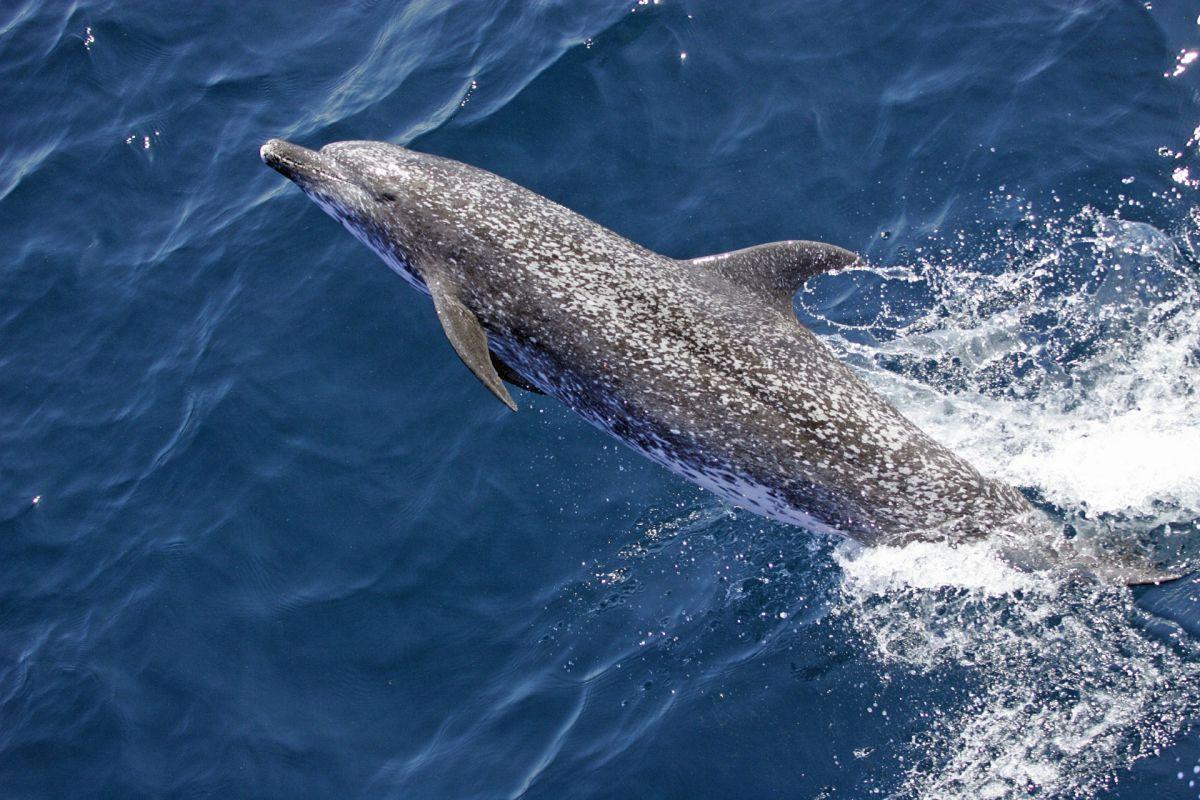
- Name: Atlantic spotted dolphin
- Scientific name: Stenella frontalis
- Conservation status:
The Atlantic spotted dolphin is a species of dolphin native to warm temperate and tropical waters of the Atlantic Ocean, as well as parts of the Mediterranean Sea. Its color largely varies as it grows older, going from gray-white as a calf to black with a white spot at full maturation.
This dolphin is highly sociable and lives in groups of about 5 to 15 individuals, usually mixed with common bottlenose dolphins.
16. West African crocodile
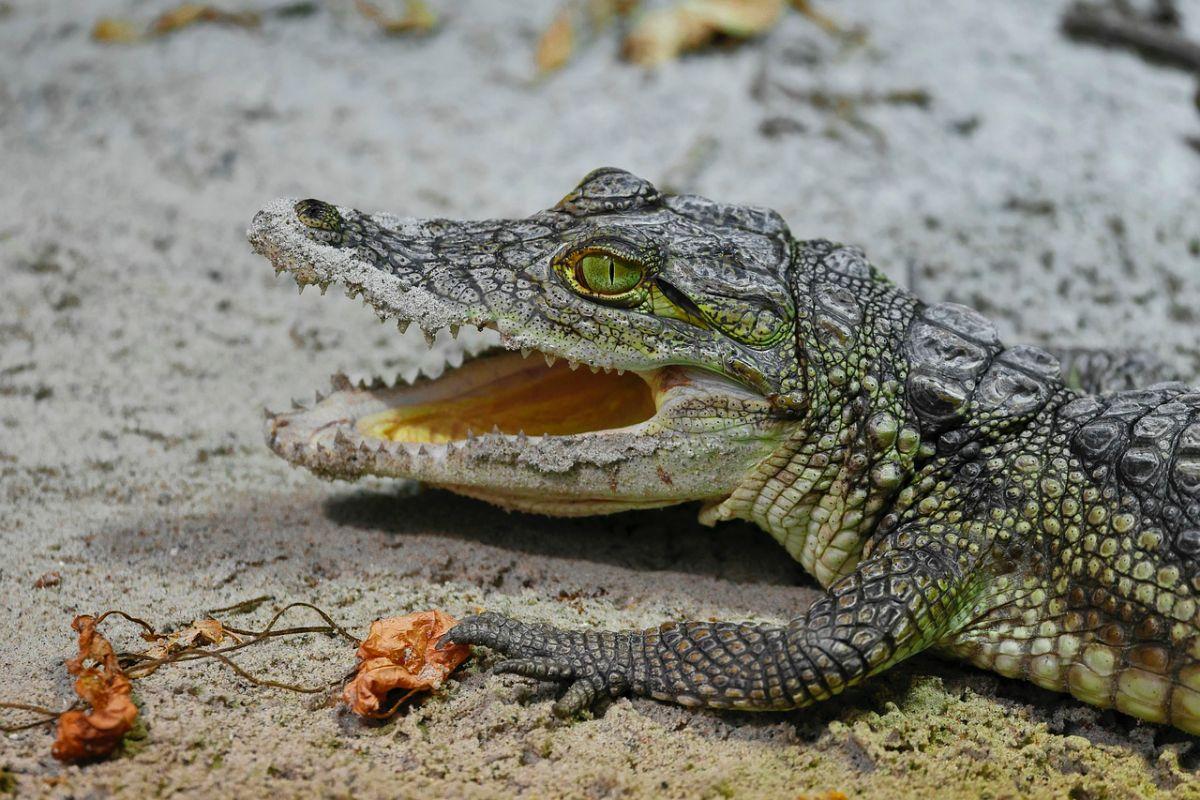
- Name: West African crocodile
- Scientific name: Crocodylus suchus
- Conservation status:
The West African crocodile, also known as the sacred crocodile or the desert crocodile, is a species of crocodile related to the Nile crocodile, although it is smaller and less aggressive.
This crocodile is the only one that can be found in Morocco, and it inhabits the arid desert environment of the Sahara and the Sahel. During the driest months of the year, it aestivates, which is basically hibernating in the summer!
17. Puff adder
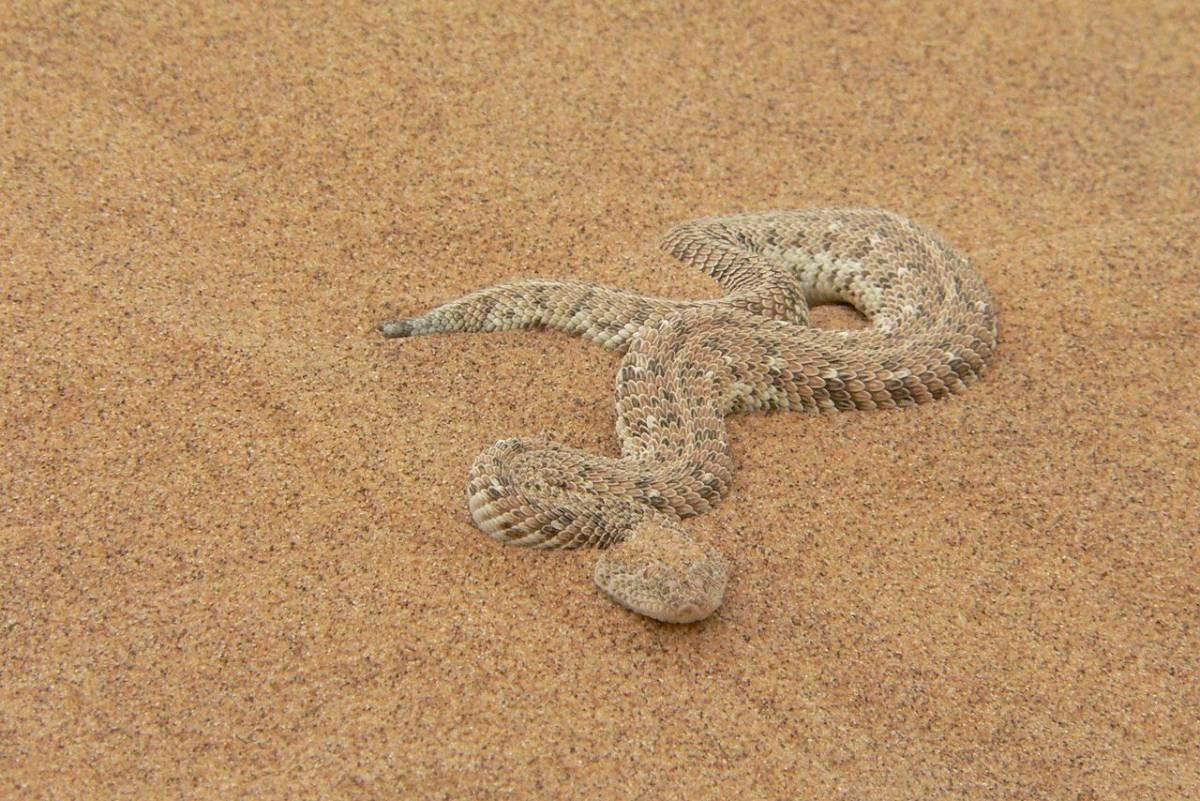
- Name: Puff adder
- Scientific name: Bitis arietans
- Conservation status:
The puff adder is a species of venomous snake that can be found across much of sub-Saharan Africa (except for the rainforest and tropical regions), as well as the southwestern Arabian Peninsula and southern Morocco.
In Morocco, it lives in savanna and grasslands and has an ideal color pattern to stay camouflaged in these arid environments. It is the most common and widespread species of snake on the continent and feeds on mammals, amphibians, birds, and lizards.
18. Desert monitor
- Name: Desert monitor
- Scientific name: Varanus griseus
- Conservation status:
The desert monitor is a species of monitor lizard native to North Africa and southern Asia. It is carnivorous and feeds on a wide variety of both invertebrates and vertebrates.
While overall listed as least concern, the desert monitor is a threatened species in Morocco. The main reasons for that are agricultural expansion, human pressure and encroachment, and hunting for the commercial trade, primarily for its skin.
—
So there you have them, these were my 18 wild animals that live in Morocco. I hope you enjoyed this list and that you learned something new today.
In case you want to learn more about Morocco wildlife, feel free to keep reading, as I still have lots of things to tell you about:
Endangered Animals of Morocco
This is definitely the saddest part of the list, but it is very important to raise awareness. Because of this, let’s go through the list of endangered animals in Morocco.
Here are the animals in danger of extinction in Morocco.
- Scimitar-horned oryx
- Lake Sidi Ali trout
- Barbary lion
- Addax
- Sand tiger shark
- Great hammerhead
- Hooded vulture
- Dama gazelle
- and 19 more…
- Barbary macaque
- Mediterranean monk seal
- Chafarinas’ skink
- African gulper shark
- Shortfin mako
- and 32 more…
To see the full list of endangered species in Morocco, head over to the International Union for Conservation of Nature’s Red List.
What is the National Animal of Morocco?
The national animal of Morocco is the Barbary lion.
Previously thought to be a separate species, the Barbary lion is actually very similar to other African lions. It is a species of lion that is extinct in the wild and that used to be found in the deserts and mountains of the Barbary Coast, from Morocco to Egypt.
Aside from Morocco, the Barbary lion frequently appears in Egyptian literature and art, as well as sculptures. In Morocco, it is depicted on the country’s coat of arms, commonly represented in clothing, gives its name to the national football team, and is a national symbol of pride, might, and freedom.
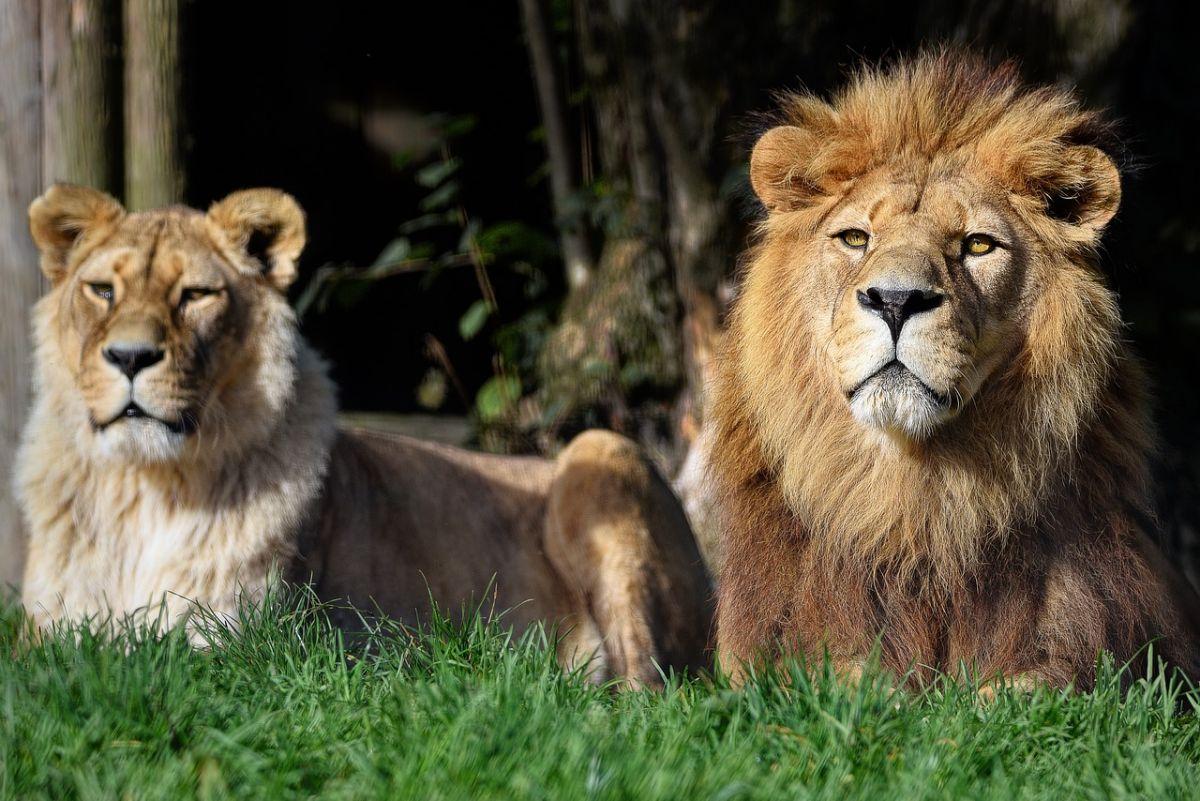
How Many Animals Native to Morocco?
What is the diversity of native animals in Morocco?
Let’s look at the total number of species of Chordata (mammals, birds, fishes, and reptiles).
Total number of animal species in Morocco: 1,677 (2,967 in total in North Africa)
What animal is Morocco known for?
There are lots of iconic animals in Morocco, but the country is particularly known for the Barbary macaque, also known as the magot or the Barbary ape. It is the only monkey in Africa that can be found north of the Sahara, and it inhabits the Rif, Middle, and High Atlas Mountains in Morocco.
This macaque primarily feeds on plants and insects and is adaptable to a wide variety of habitats. It is threatened by habitat loss, human use, and tourism.
Does Morocco have wildlife?
I hope I convinced you with the list that Morocco definitely has wildlife, but if you want more details, there are about 210 species of birds in the country, which includes common birds like woodpeckers, to more unique avians like spoonbills, flamingos, and storks.
In terms of endangered species, you have just seen that there are lots of them. And finally, about mammals, you will find nearly 105 mammal species in Morocco.
More About Animals in the World!
Loved these Morocco animal facts? Want to see what animals live in other countries?
Then check out these posts:
Or click here to see ALL the facts up on the blog! Spoiler alert: there’s A LOT of them.
Share the knowledge! Click on the buttons below to share information about these animals found in Morocco with your friends, and help them learn more about the world 🙂
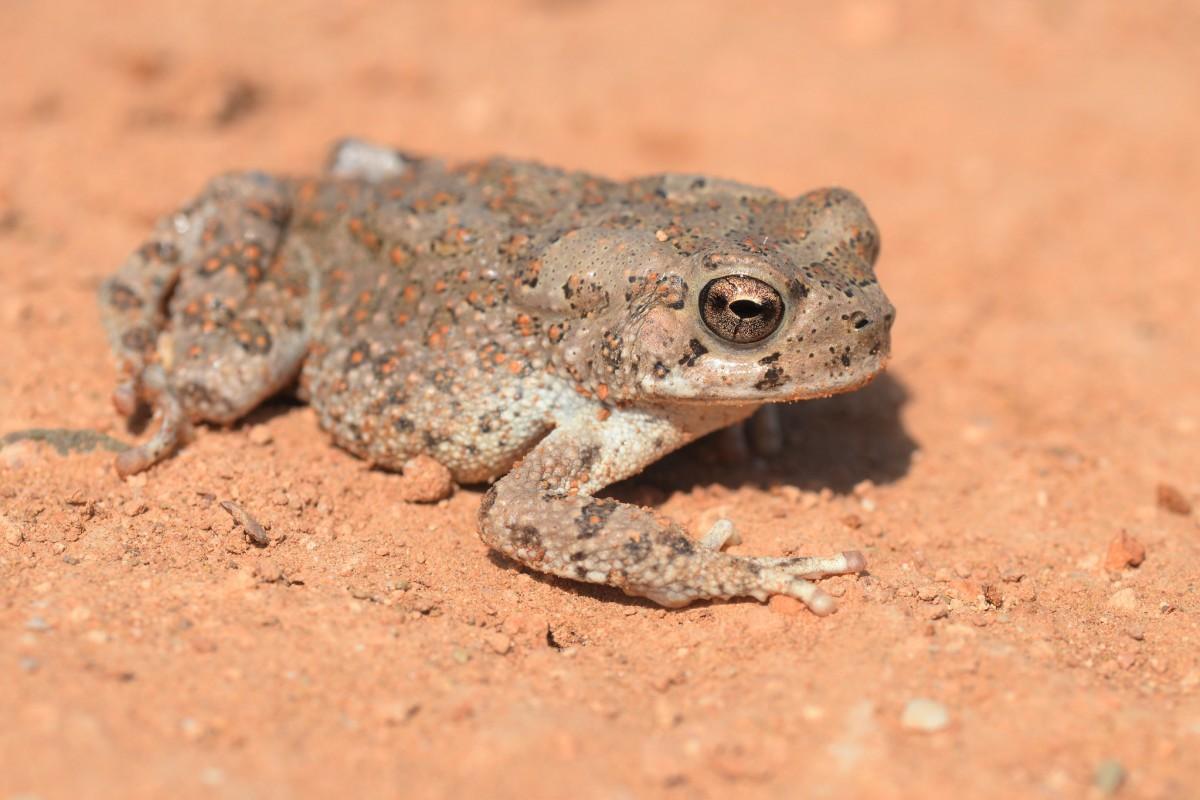
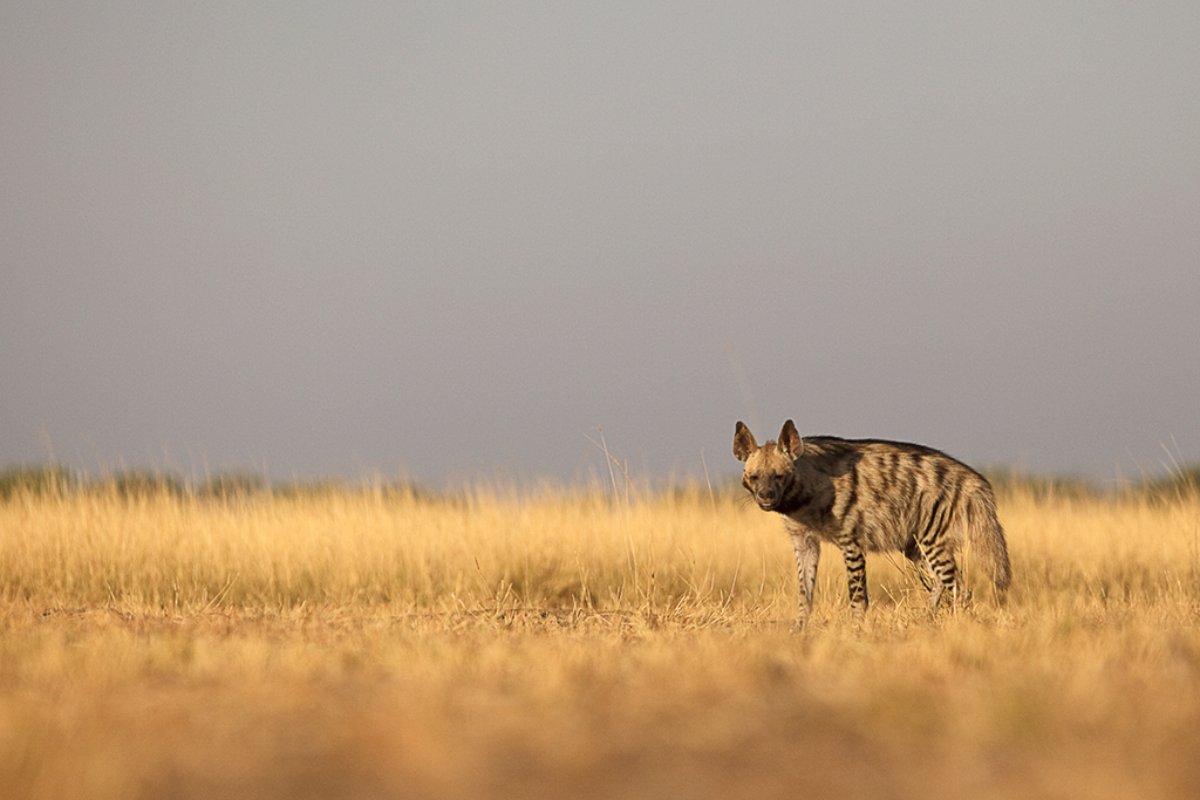
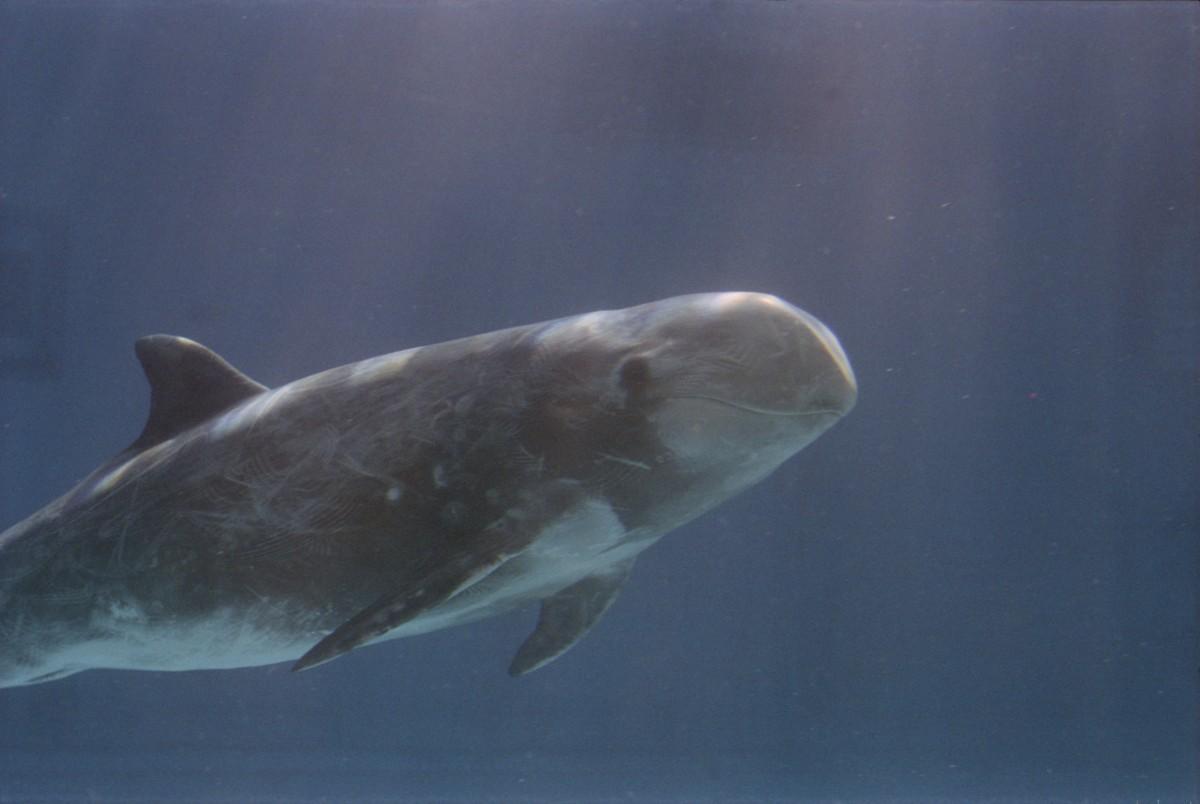
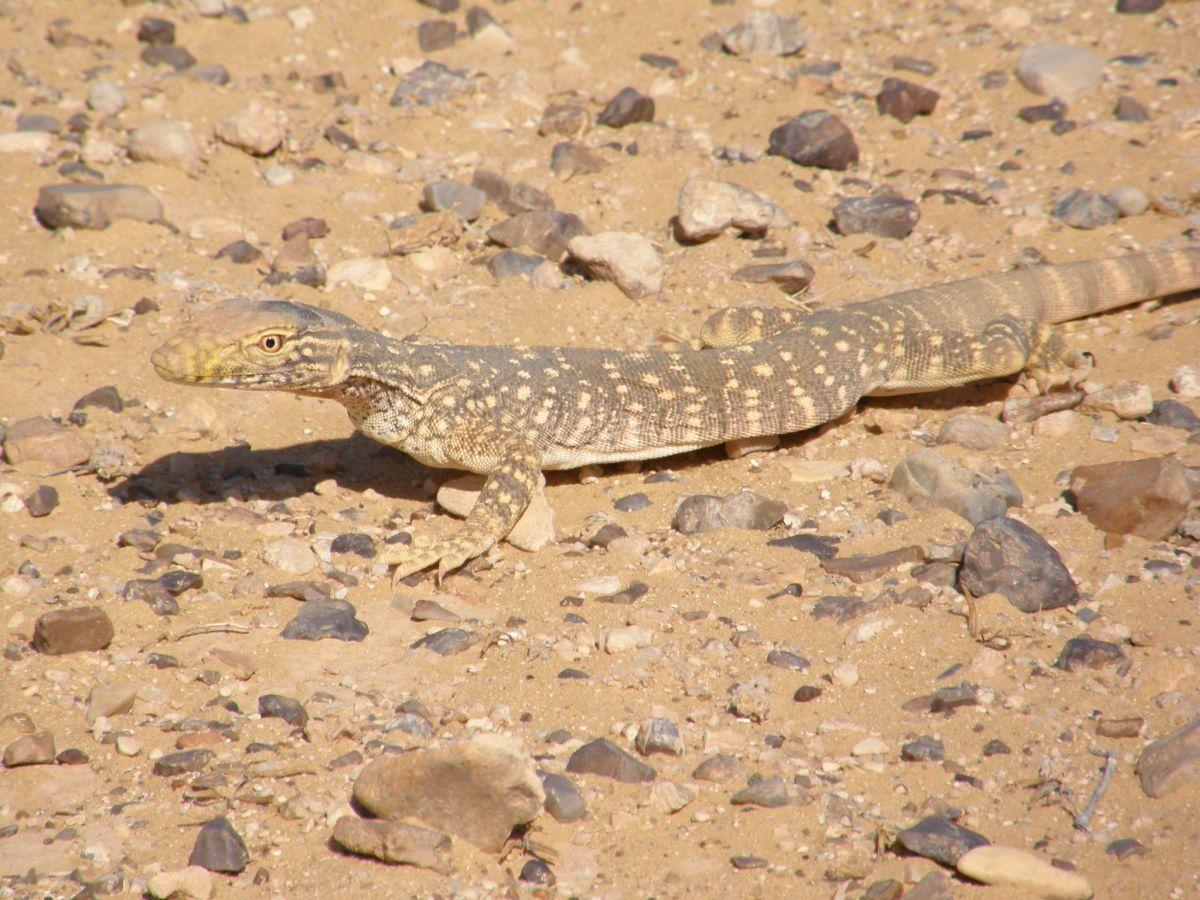

![21 Wild Animals in Burundi [Wildlife in Burundi]](https://www.kevmrc.com/wp-content/uploads/2022/12/21-wild-animals-in-burundi.jpg)
![10 Wild Animals in Chad [Wildlife in Chad]](https://www.kevmrc.com/wp-content/uploads/2022/12/10-wild-animals-in-chad-africa.jpg)
![21 Wild Animals in Hungary [Wildlife in Hungary]](https://www.kevmrc.com/wp-content/uploads/2022/06/21-wild-animals-in-hungary.jpg)